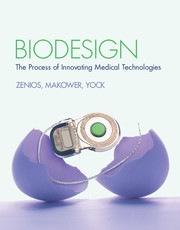Preface
Summary
If you have the desire to develop new medical technologies, there is a world of opportunity available to you. Health and quality of life are central issues for every human being on the planet. Through advances in science and technology, the complexities of the human body are being revealed, creating new ways to solve clinical needs that no one imagined previously. Medicine and surgery are more open for innovation than at any time in history.
Despite this promise, however, medtech innovators face significant hurdles. If not managed skillfully, patents, regulatory approval, reimbursement, market dynamics, business models, competition, financing, clinical trials, technical feasibility, and team dynamics (just to name a few of the many challenges) can all prevent even the best idea from reaching patient care. So, where should you begin as an innovator? What process can you use to improve your chances of success? What lessons can you learn from the inventors, engineers, physicians, and entrepreneurs who have succeeded and failed in this endeavor before? This book has been developed to provide practical answers to these important questions.
The text is based on a simple premise: that innovation is both a process and a skill that can be learned. While some may have more natural ability than others, everyone can be an innovator. The biodesign innovation process, as we call it, is described here in a way that is specific to the development of medical technologies, but the same general approach is followed by successful innovators in many fields.
- Type
- Chapter
- Information
- BiodesignThe Process of Innovating Medical Technologies, pp. ix - xiiiPublisher: Cambridge University PressPrint publication year: 2009



